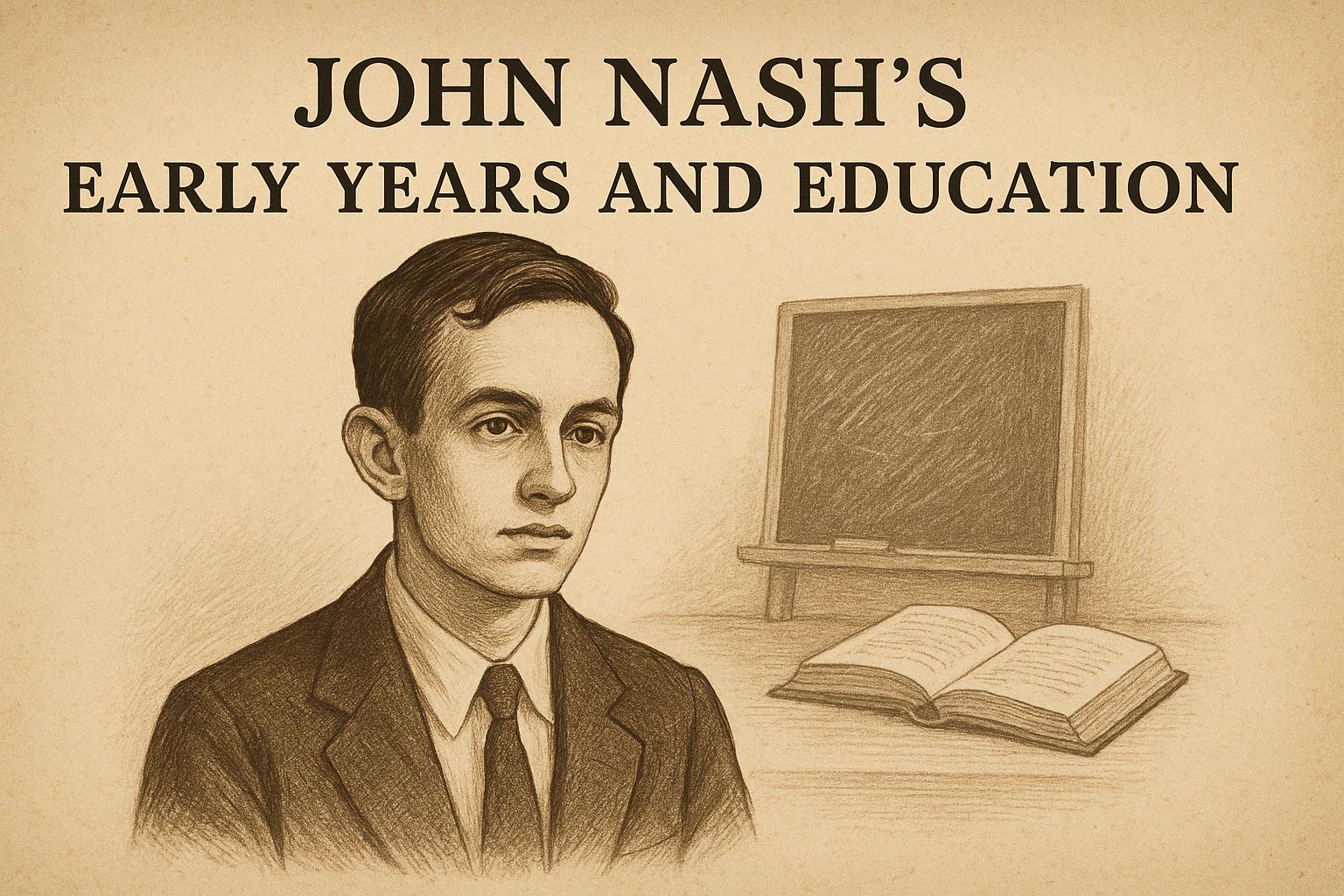John Nash’s Formative Years
John Forbes Nash Jr. was born on June 13, 1928, in Bluefield, West Virginia. From an early age, Nash demonstrated distinctive qualities and capabilities that distinguished him from others. His father, John Sr., was an electrical engineer, and his mother, Margaret, had been a schoolteacher. This background provided an intellectually stimulating environment that played a pivotal role in shaping his early interests and educational path.
Early Education
Nash embarked on his academic journey in public schools, where his innate intelligence and curiosity were quickly recognized. Though he was not particularly social and often preferred solitary activities, he found comfort and challenge in the realm of books and numbers. With his independent mindset, Nash’s earlier education laid a solid groundwork for his future accomplishments. He did not lean towards conventional learning methods, which revealed his unique approach to education and problem-solving.
Interest in Mathematics
By the time Nash reached high school, his passion for mathematics was unmistakably evident. He integrated himself deeply into mathematical literature, planting the seeds for groundbreaking contributions he would later make in the field. Although he leaned towards learning autonomously rather than through structured classroom lessons, Nash developed a distinctive analytical mindset. This approach would become a hallmark of his future academic and professional work, highlighting his unique perspective on mathematical problems.
Higher Education at Carnegie Institute of Technology
Nash’s pursuit of advanced education took root at the Carnegie Institute of Technology, now known as Carnegie Mellon University, situated in Pittsburgh, Pennsylvania. He enrolled in 1945, initially with an intent to study chemical engineering. However, he soon transitioned his focus to mathematics, a decision that would pivotally define his academic path and future career. Under the encouraging atmosphere at Carnegie, Nash thrived through creative thinking and problem-solving. It was during this time that Nash delved deep into mathematical concepts and started forming groundbreaking ideas which later brought him recognition within the mathematical community.
Graduation and Fellowship
He graduated in 1948 with both a Bachelor’s and a Master’s degree. His exceptional performance and innovative thinking earned him the prestigious Westinghouse Fellowship, which offered him the opportunity to pursue further studies. Nash’s achievements at Carnegie were not solely academic; they laid vital groundwork for his subsequent, influential work in game theory. This period marked the beginning of Nash’s journey into uncharted territories of mathematical thought, underlining his potential for future innovations.
Matriculation at Princeton University
After his successful tenure at Carnegie, Nash continued his education at Princeton University. It was here that his intellectual abilities truly came into prominence. Princeton provided an ideal environment for Nash to engage and work with leading minds of the era. During his time at Princeton, Nash developed the concept of the Nash Equilibrium, which became a cornerstone in the field of modern game theory. His interactions and work at Princeton helped shape his intellectual pursuits, exposing him to new ideas and perspectives that would enter into his own academic endeavors.
Doctoral Thesis on Non-Cooperative Games
His most notable academic achievement at Princeton was his composition of a doctoral thesis titled “Non-Cooperative Games.” This work introduced concepts that fundamentally altered the understanding of strategic decision-making processes. Nash’s pioneering insights during these years provided a necessary framework for the development of game theory, expanding its applications and significance across various domains such as economics, political science, and beyond. It showcased his ability to abstract complex real-world interactions and conceptualize them in mathematical terms, contributing a novel perspective to the study of strategic interactions.
Legacy from Early Academic Years
John Nash’s early academic years formed the bedrock that supported all his subsequent contributions. His unique approach to problem-solving and his preference for independent exploration were nurtured and honed during his formative years at Carnegie and Princeton. These educational experiences shaped his mathematical journey, effectively setting the stage for the extraordinary breakthroughs that eventually earned him worldwide recognition and respect. Nash’s legacy is deeply rooted in the disciplined yet creatively open environment he found himself in during these critical years of academic growth, which allowed his exceptional talent to flourish and leave a lasting impact on the field of mathematics.
For a comprehensive understanding of Nash’s contributions, further resources can be explored from reputable academic publications that offer insights into his groundbreaking work and the influence it left across various intellectual landscapes. Such exploration can provide a richer perspective on how Nash’s early academic experiences charted a course for the remarkable achievements that followed, cementing his legacy as one of the most influential figures in the realm of mathematics and beyond.
This article was last updated on: September 14, 2025

